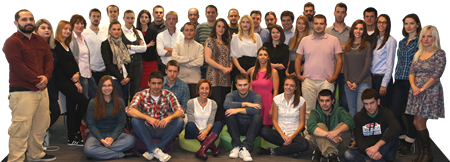Fundamentals of Government - Schmandt, Steinbicker
| Cena: |
| Stanje: | Polovan bez oštećenja |
| Garancija: | Ne |
| Isporuka: | Pošta CC paket (Pošta) Post Express |
| Plaćanje: | Tekući račun (pre slanja) |
| Grad: |
Novi Sad, Novi Sad |
ISBN: Ostalo
Godina izdanja: 0000
Jezik: Engleski
Autor: Strani
U dobrom stanju. Na par mesta (možda samo ovde) skromno obeležen tekst, kao na slici
Fundamentals of Government. By Henry J. Schmandt and Paul G. Steinbicker. (Milwaukee: The Bruce Publishing Company. 1954. Pp. xii, 507.)
Contents
Preface · v
Part One. Introduction
Chapter One. The Power of Politics · 3
The Growth of Popular Interest in Politics
Evidence of Awakened Interest in Public Affairs
Significance of the Growth in Political Consciousness
Causes for Increased Governmental Activity
The Effect of the Industrial Revolution on Government
Conclusion
Part Two. The Bases of Politics
Chapter Two. The Scope and Methodology of Political Science · 17
What Is Political Science?
The Scope and Subject Matter of Political Science
“Politics” in Common Parlance
Politics as a Science
Political Science and Ethics
The Relation of Politics to the Other Social Sciences
Methodology: Induction and Deduction
The Philosophical Method
The Historical Method
The Comparative Method
The Juridical or Legal Method
The Sociopsychological Methods
“Political Behavior” Research
Conclusion
Chapter Three. The Natural Law · 49
Background of Natural Law
The Meaning of Natural Law
The Content of Natural Law
The Distortion of Natural Law
Conclusion
Part Three. The Philosophy of the State
Chapter Four. The Nature of the State · 65
The Problem of Definition
Material Elements of States: People, Territory, Government
The Need for a Unifying Element
The Organismic Theory
The Mechanistic Theory
The Organic or Corporate Theory of the State
Conclusion
Chapter Five. The Sovereignty of the State · 88
The Problem of Definition
The Meaning of Sovereignty
Moral Sovereignty
Political Sovereignty
Legal Sovereignty
Physical Sovereignty
Conclusion
Chapter Six. The Origin of the State · 106
Historical Origin of States in General
Historical Origin of Modern States
The Philosophical Origin of the State
The Need for the State
The Origin of Political Authority
Conclusion
Part Four. The Role of the State
Chapter Seven. The Purpose of the State · 129
The Significance of the Problem
Anarchism
Individualism
Collectivism
The Common Good
The General Content of the Common Good
The General Welfare
The Principle of Subsidiarity
Justice
State Functions and the Natural Law
The Right of Revolt
Conclusion
Chapter Eight. The State and the Individual · 155
The Right to Life
The Concomitants of Life
The Right to Personal Liberty
The Right to Private Property
Conclusion
Chapter Nine. The State and Other Associations · 179
The Family
Voluntary Associations
The State and Other States
The State and the Church
Conclusion
Part Five. The Basic Forms of Government
Chapter Ten. Constitutional Government · 205
The Political Constitution — What Is It?
The Meaning of Constitutional Government
Ancient and Medieval Constitutionalism
Modern Constitutionalism
The Spirit of Constitutionalism
The Written Constitution
Flexible and Rigid Constitutions
Constitution-Making
Constitutional Patterns
Constitutional Growth
Conclusion
Chapter Eleven. Government by the People · 237
Extent of Popular Participation
Popular Participation in the Legislative Function
The Role of the Representative
Popular Participation in the Selection of Representatives
The Right to Vote
The Meaning of Democracy
The Case for Popular Rule
Democracy in Practice
Majority Rule
Conclusion
Chapter Twelve. The “People” Organized · 269
The Electoral Machinery
Political Parties
Pressure Groups
Conclusion
Part Six. The Structure of Government
Chapter Thirteen. The Division of Political Power · 305
The Essence of Federalism
Confederation
Summary of Three Governmental Systems
The Problem of Dividing Governmental Power
The Method of Distribution
The American Model
An Appraisal of Unitary Government
The Advantages of Federalism
Federalism in Society
The Future of Federalism
Conclusion
Chapter Fourteen. The Separation of Political Power · 332
Functional Distribution
Relationship Between Territorial and Functional Distribution
Theory of Functional Division
Checks and Balances
Cabinet Government
Cabinet Government: British Style
Cabinet Government: French Style
The Presidential System
Mixed Forms
The Case for Cabinet Government
The Strength of Presidential Government
Similarities in British and American Practice
Conclusion
Part Seven. The Branches of Government
Chapter Fifteen. Makers of the Law · 361
Legislative Structure
Membership in Legislative Bodies
General or Single Member Districts
Proportional Representation
Functional Representation
Term of Office
Size of Lawmaking Bodies
Pay and Prerequisites of Lawmakers
Internal Organization and Procedure
Informal Legislative Procedure
Nonlegislative Functions of the Lawmaking Branch
The Position of Lawmaker
Conclusion
Chapter Sixteen. Executors of the Law · 396
Executives and Administrators
Selection of Chief Executives
The Term of the Chief Executive
The Administrative Structure
Executive Powers and Functions
The Human Element in Administration
Conclusion
Chapter Seventeen. Adjudicators of the Law · 430
The Pattern of Law
The Judicial Function
Judicial Organization
Administrative Courts
Judicial Procedure
The Selection and Tenure of Judges
Conclusion
Part Eight. The Family of Nations
Chapter Eighteen. International Law and Organization · 465
The Nature of International Law
The Basis of Obligation in International Law
The Sources of International Law
The Function of International Law
International Organization
Early Efforts at International Control
The League of Nations
The Genesis of the United Nations
The General Assembly
The Security Council
The Secretariat
The Economic and Social Council
Trusteeship Council
The International Court of Justice
The Record of the United Nations
Conclusion
Appendix · 492
Index · 497
The book begins with an introductory text that is “frankly based upon the principle that man is a moral being, with not only a natural but also a supernatural end.” It covers major topics such as:
The scope and methodology of political science
Natural law
The philosophy and role of the state
Basic forms, structure, and branches of government
A concluding chapter on international law and organization
L_I_Č_N_O______P_R_E_U_Z_I_M_A_NJ_E_:
Za kupovine ukupne vrednosti preko 3.000 dinara moguće lično preuzimanje u Puškinovoj u Novom Sadu. Ako je za pojedinačnu knjigu navedena samo opcija Pošta, lično preuzimanje samo te knjige nije moguće. U Novom Sadu moguća je lična dostava i plaćanje preko službe Eko-kurir (cena je 250-350 din).
STANJE KNJIGE:
Knjiga koju dobijate je ona koja je na slici. Ukoliko nije naznačeno da je knjiga nova ili nekorišćena, ponekad se desi da na predlistu stoji potpis, posveta ili pečat i da to nije navedeno u opisu. Ako vam takve stvari smetaju, pitajte me pre kupovine da proverim.
KOMUNIKACIJA:
Komunikacija ide isključivo preko Kupindo poruka, ne telefonom. Budite normalni.
POPUSTI, CENKANJE I SL.:
Cena je ta koja piše, molim vas da mi ne šaljete pitanja o poslednjoj i zadnjoj ceni niti svoje kontraponude.
SLANJE:
Knjige šaljem kao tiskovinu ili CC paket nakon uplate na račun. Pakujem ih bezbedno i pažljivo, dobijate ih u stanju u kojem su poslate. Poštarina za jednu pošiljku obično iznosi od 190 do 260 din, u zavisnosti od težine. To je poštarina za tiskovinu, CC paket je skuplji, post ekspres je najskuplji. Za četiri i više pojedinačno kupljenih knjiga (u to ne spadaju kompleti) ja snosim troškove poštarine. Potrebno je da uplatite/preuzmete knjigu u propisanom roku od 7 dana.
SUSEDNE ZEMLJE I INOSTRANSTVO:
Poštarina je za jednu knjigu visoka i okvirno se kreće od 10-15 eur za prvu i oko 7 eura za svaku dodatnu knjigu. Postoji mogućnost znatno isplativijeg slanja za teže pakete. Uplate PayPalom (+10%), direktno na devizni račun, Western Union ili Moneygram. Najbolje je da pre kupovine pitate koliki su troškovi dostave, jer su često veći od cene same knjige.
INTERNATIONAL ORDERS:
I will send abroad. For your calculation, one hundred dinars roughly equals $1. Please register here:
https://www.limundo.com/Registracija/Kupindo
and then PM me on the link below for postage costs (they usually start at around 15 euro for the first book and 7 euro for each additional one)
https://www.kupindo.com/Clan/ndi/PostaviPitanje
MOJA PONUDA:
Nove knjige postavljam gotovo svaki dan. Možete ih pratiti na ovom linku http://www.limundo.com/Clan/ndi (pritisnite dugme `Prati`)
¤¤¤¤¤¤¤¤¤¤¤¤¤¤¤¤¤¤¤¤¤¤¤¤¤¤¤¤¤¤¤¤¤¤¤¤¤¤¤¤¤¤¤¤¤¤¤¤¤¤¤¤¤¤¤¤¤¤¤¤¤¤¤¤¤¤¤¤¤¤¤¤¤¤¤¤¤¤¤¤¤¤¤¤
Predmet: 82119401











